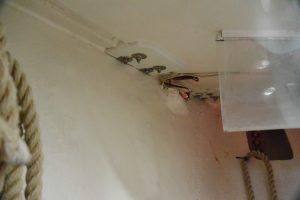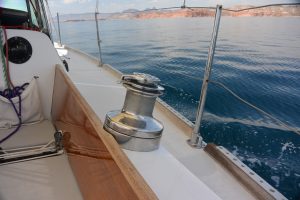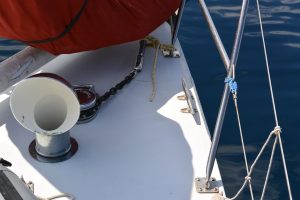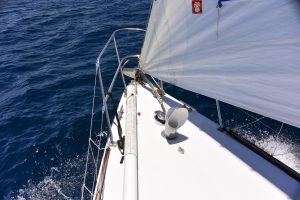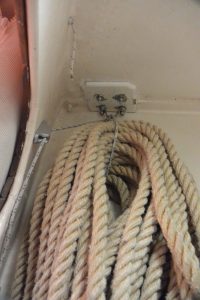We located our stanchions to be at convenient locations relative to the sheeting positions, shrouds, and winches, and still meet the maximum OSR spacing. Our hull to deck joint is glassed so we do not need a continuous toe rail to conceal the deck overlap on the hull flange.
So we put on a J24 style toe rail where the stanchion bases are maximum outboard, and the toe rail has independent pieces of teak that are between the stanchion bases. There are several advantages. One is that if you have a collision and damage a piece of the toe rail, it is easily replaced without a major woodworking project. When we milled the original toe rail teak pieces, we made a few spares. Another advantage is the leeward deck drains quickly because there are large open outlets adjacent to all stanchion bases. Finally by having the stanchions maximum outboard, it makes it easier to sheet the foot of the genoa inside the lifelines and outside the upper shrouds, and gives more clearance to winch handles.
For backup plates we use 1/2 inch G10. We filled the gap outboard of the deck core and inboard of the hull flange with epoxy mixed with filler.
The mooring cleats are maximum outboard right on the toe rail so we don’t need chocks, and there is no chafe. The mooring cleats are similarly backed up with G10.
The bow and stern pulpit legs terminate on pad eyes. We find we use the additional attachments often when changing headsails etc.
We were a bit worried that the lack of a continuous toe rail might change the Cal 40 look, but it looks fine.

